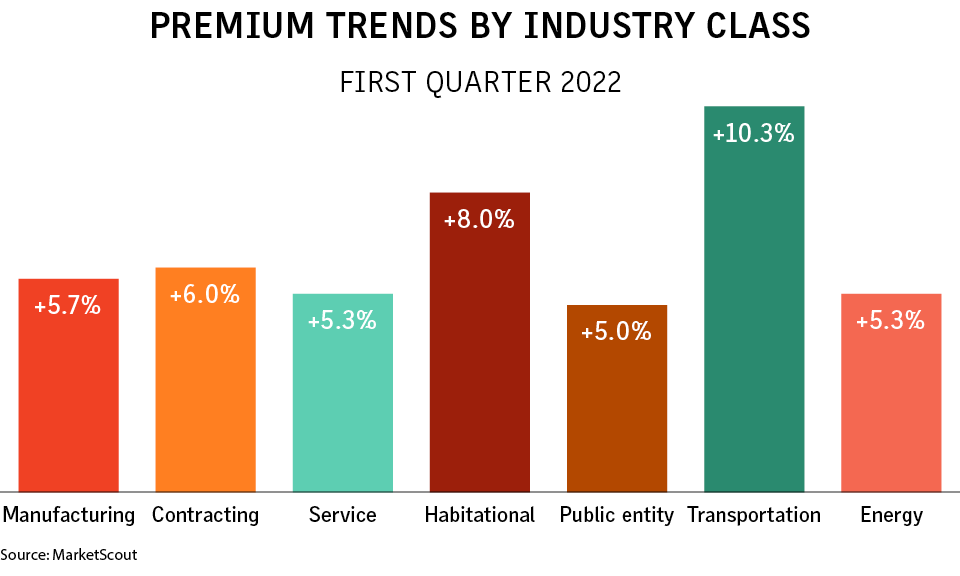Legal compliance
Navigating Business Risks: Current Insurance Trends
![]()
Navigating Business Risks: Current Insurance Trends
The landscape of business insurance is constantly evolving to address emerging risks and challenges. In this article, we explore the current trends shaping the world of business insurance, providing insights into how companies can navigate risks effectively.
Rising Importance of Cyber Insurance
In an era dominated by digital connectivity, cyber threats have become a significant concern for businesses. Cyber insurance has emerged as a vital component of risk management, providing coverage against data breaches, ransomware attacks, and other cyber risks. As technology continues to advance, the demand for robust cyber insurance policies is expected to rise.
Pandemic-Related Coverage Considerations
The global pandemic has highlighted the need for businesses to reassess their insurance coverage. Many traditional insurance policies did not adequately address the challenges posed by the pandemic. As a result, there is a growing trend towards exploring and implementing business interruption insurance that specifically covers pandemics and other unforeseen global events.
Focus on ESG (Environmental, Social, and Governance) Factors
Environmental, Social, and Governance (ESG) considerations are increasingly influencing business practices, and insurance is no exception. Companies are placing greater emphasis on ESG factors in their risk assessments and insurance strategies. Insurance providers are responding by offering products that align with sustainable and socially responsible business practices.
Remote Work and Flexible Coverage
The shift towards remote work has prompted a reevaluation of traditional insurance models. Businesses are seeking more flexible coverage options that accommodate remote work environments. This includes coverage for employees working from various locations and ensuring that insurance policies remain relevant in the evolving landscape of remote and flexible work arrangements.
Climate Change Impact on Insurance
The escalating impact of climate change has led to a surge in insurance claims related to natural disasters. Insurers are adapting by incorporating climate risk assessments into their underwriting processes. Businesses are also increasingly aware of the need for comprehensive coverage against climate-related risks, such as flooding, wildfires, and other extreme weather events.
Integration of AI and Data Analytics
Advancements in artificial intelligence (AI) and data analytics are revolutionizing the insurance industry. Insurers are leveraging AI to enhance underwriting accuracy, streamline claims processing, and assess risks more effectively. The integration of technology not only improves the efficiency of insurance processes but also allows for more tailored and data-driven coverage.
Supply Chain Disruption Coverage
The global supply chain disruptions experienced in recent years have underscored the importance of supply chain insurance. Businesses are recognizing the need for coverage that protects against disruptions caused by events such as natural disasters, geopolitical tensions, or global health crises. Supply chain insurance is becoming a key consideration for risk management strategies.
Evolving Employee Benefits Landscape
Employee benefits are integral to attracting and retaining top talent. The evolving employee benefits landscape includes insurance offerings beyond traditional health and retirement plans. Businesses are exploring innovative benefits such as mental health coverage, wellness programs, and unique insurance packages to enhance employee satisfaction and well-being.
Increased Emphasis on Legal and Regulatory Compliance
The ever-changing legal and
Navigating Global Expansion: Effective Business Strategies

Navigating Global Expansion: Effective Business Strategies
Expanding a business globally presents both opportunities and challenges. In this article, we explore key strategies for successful global business expansion, guiding organizations through the intricate process of entering new markets and thriving on a global scale.
Market Research: The Foundation of Global Expansion
Before embarking on global expansion, thorough market research is essential. Understanding the target market’s demographics, consumer behavior, and cultural nuances provides valuable insights. This foundational knowledge informs decision-making and helps tailor strategies to meet the specific demands of diverse markets.
Localization: Adapting to Cultural Differences
Cultural sensitivity is critical in global business expansion. Localization involves adapting products, services, and marketing strategies to suit the cultural preferences and norms of each target market. Respectful integration ensures that the business resonates with local audiences, fostering acceptance and trust.
Strategic Partnerships: Leveraging Local Expertise
Establishing strategic partnerships with local businesses or experts is a powerful strategy for global expansion. These partnerships provide invaluable insights into the local business landscape, regulatory environment, and consumer behavior. Leveraging local expertise enhances the organization’s ability to navigate unfamiliar territories successfully.
Legal Compliance: Navigating Regulatory Challenges
Global expansion brings with it a myriad of regulatory challenges. From compliance with local laws to understanding international trade regulations, businesses must navigate complex legal landscapes. Investing in legal counsel and staying abreast of regulatory changes is crucial to ensuring a smooth and lawful expansion process.
Risk Management: Anticipating and Mitigating Challenges
Expanding globally involves inherent risks. Effective risk management strategies anticipate potential challenges and outline mitigation plans. Businesses must identify geopolitical, economic, and operational risks to develop contingency plans that safeguard the continuity and success of global operations.
Technology Integration: Streamlining Global Operations
Technology plays a pivotal role in global business expansion. Integrating advanced technologies for communication, project management, and data analytics streamlines global operations. This ensures efficient collaboration among teams across different time zones and facilitates data-driven decision-making.
Talent Acquisition and Development: Building a Global Team
A successful global expansion requires a skilled and diverse workforce. Businesses should focus on talent acquisition strategies that attract individuals with a deep understanding of local markets. Additionally, investing in ongoing training and development programs ensures that the global team remains adaptive and competitive.
Financial Management: Adapting to Currency and Market Fluctuations
Fluctuations in currency and market conditions are inherent to global expansion. Implementing robust financial management strategies, including hedging against currency risks and regularly assessing market conditions, safeguards the financial stability of the business during global operations.
Customer-Centric Approach: Building Global Relationships
Maintaining a customer-centric approach is paramount in global expansion. Building strong relationships with customers across diverse cultures requires attentiveness to customer needs, personalized service, and responsiveness to feedback. A positive customer experience fosters brand loyalty and advocacy on a global scale.
Continuous Evaluation and Adaptation: Staying Agile
Global business environments are dynamic, requiring organizations to remain agile. Continuous evaluation of strategies, market conditions, and performance metrics is essential. This ongoing assessment enables businesses to adapt quickly to changes, capitalize on emerging
Optimizing Workforce: Effective Employee Benefits Strategies

Optimizing Workforce: Effective Employee Benefits Strategies
Employee benefits play a pivotal role in attracting and retaining top talent while fostering a positive work environment. In this article, we explore the significance of employee benefits in businesses and delve into effective strategies for optimizing the workforce through comprehensive benefits packages.
Understanding the Impact of Employee Benefits
Employee benefits go beyond traditional salary packages, influencing job satisfaction, employee loyalty, and overall well-being. A robust benefits program communicates a company’s commitment to the welfare of its employees, creating a positive workplace culture. Understanding the profound impact of employee benefits is crucial for businesses aiming to build a motivated and dedicated workforce.
Attracting Top Talent with Competitive Benefits
In today’s competitive job market, attracting top talent requires more than just a competitive salary. Prospective employees often assess the overall benefits package offered by a company. Businesses that offer attractive health insurance, retirement plans, and unique perks position themselves as desirable employers, enhancing their ability to attract high-caliber professionals.
Employee Wellness Programs: A Holistic Approach
Wellness programs have gained prominence as a holistic approach to employee well-being. These programs encompass initiatives such as fitness classes, mental health support, and preventive health measures. Investing in employee wellness not only enhances the physical and mental health of the workforce but also contributes to increased productivity and reduced absenteeism.
Flexible Work Arrangements and Work-Life Balance
The modern workforce values flexibility in work arrangements. Businesses that incorporate flexible work options, such as remote work or flexible hours, recognize the importance of achieving a healthy work-life balance. Flexible arrangements contribute to improved job satisfaction, reduced stress, and increased employee retention.
Financial Wellness: Beyond Salary
Financial stress can significantly impact employee performance. Offering financial wellness benefits, such as financial planning assistance, tuition reimbursement, and employee assistance programs, demonstrates a commitment to supporting employees beyond their immediate job roles. Businesses that address the financial well-being of their employees foster a sense of security and loyalty.
Retirement Plans: Building Financial Security
Retirement plans are a cornerstone of comprehensive employee benefits. Providing retirement savings options, such as 401(k) plans or pension schemes, helps employees build financial security for the future. Businesses that prioritize retirement benefits contribute to the long-term financial well-being of their workforce.
Customizing Benefits Packages to Employee Needs
Every employee has unique needs and priorities. Businesses that offer customizable benefits packages allow employees to tailor their benefits to match their individual circumstances. This level of personalization enhances the perceived value of the benefits program and caters to the diverse needs of a multi-generational workforce.
Communication and Education: Key Components
Effective communication and education about available benefits are essential for maximizing their impact. Many employees may not fully understand the breadth of benefits offered. Businesses should invest in clear communication strategies and educational programs to ensure that employees are aware of and make the most of the benefits available to them.
Employee Feedback and Continuous Improvement
Regularly seeking employee feedback on benefits programs is a valuable practice. Employee surveys and feedback sessions provide
Securing Small Businesses: Cybersecurity Essentials

Securing Small Businesses: Cybersecurity Essentials
In an era dominated by digital connectivity, small businesses find themselves vulnerable to cyber threats that can jeopardize their operations. Understanding and implementing cybersecurity measures is essential for safeguarding sensitive information and ensuring the longevity of small enterprises.
The Growing Threat Landscape for Small Businesses
Small businesses may believe they are less likely targets for cyberattacks, but the reality is quite the opposite. As larger corporations enhance their cybersecurity defenses, cybercriminals are increasingly targeting smaller entities. The rationale is simple – smaller businesses often have fewer resources dedicated to cybersecurity, making them attractive targets for data breaches, ransomware attacks, and other malicious activities.
Raising Awareness Among Small Business Owners
One of the initial steps in fortifying cybersecurity for small businesses is raising awareness among owners and stakeholders. Many entrepreneurs underestimate the potential risks associated with inadequate cybersecurity measures. By understanding the landscape of cyber threats, business owners can appreciate the importance of implementing robust security protocols.
Implementing Basic Cybersecurity Measures
Small businesses need not invest heavily to establish a foundational level of cybersecurity. Simple yet effective measures include regularly updating software, utilizing firewalls and antivirus programs, and enforcing strong password policies. These basic steps significantly enhance the overall security posture, acting as a deterrent to opportunistic cybercriminals.
Employee Training as a Crucial Component
Human error remains a significant factor in cybersecurity breaches. Training employees to recognize phishing attempts, use secure practices, and follow company cybersecurity policies is crucial. Small businesses should prioritize ongoing cybersecurity training to ensure that their first line of defense – their employees – remains vigilant against evolving threats.
Securing Business Networks and Devices
Small businesses often rely on interconnected networks and various devices for daily operations. Ensuring the security of these networks and devices is paramount. Employing encryption, securing Wi-Fi connections, and implementing virtual private networks (VPNs) are strategies that add layers of protection to prevent unauthorized access and data interception.
Backing Up Data: A Critical Safeguard
Ransomware attacks can paralyze small businesses by encrypting essential data. Regularly backing up data to secure, offsite locations provides a lifeline in the event of an attack. Business owners should establish routine backup procedures and periodically test data restoration processes to guarantee their effectiveness.
Collaborating with Cybersecurity Experts
Recognizing their limitations, small businesses can benefit greatly from collaborating with cybersecurity experts. Whether through hiring external consultants or utilizing cybersecurity services, gaining insights from professionals helps in the creation of customized security strategies tailored to the specific needs and risks of the business.
Addressing Compliance and Legal Considerations
Certain industries and jurisdictions mandate specific cybersecurity standards and compliance. Small businesses must be aware of and adhere to these regulations to avoid legal consequences. Taking proactive steps to meet compliance requirements not only protects the business legally but also enhances its overall cybersecurity resilience.
Staying Informed About Evolving Threats
Cyber threats are dynamic and continually evolving. Small businesses need to stay informed about the latest cybersecurity trends and threats. Subscribing to cybersecurity news, participating in industry

